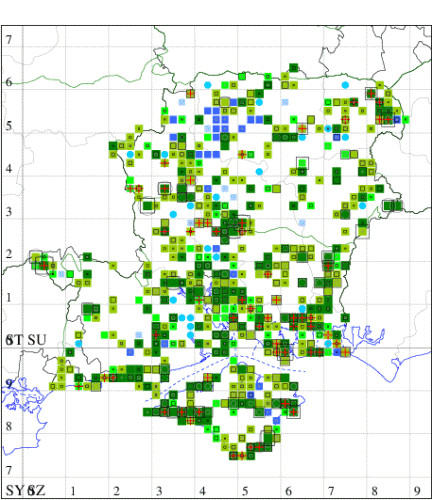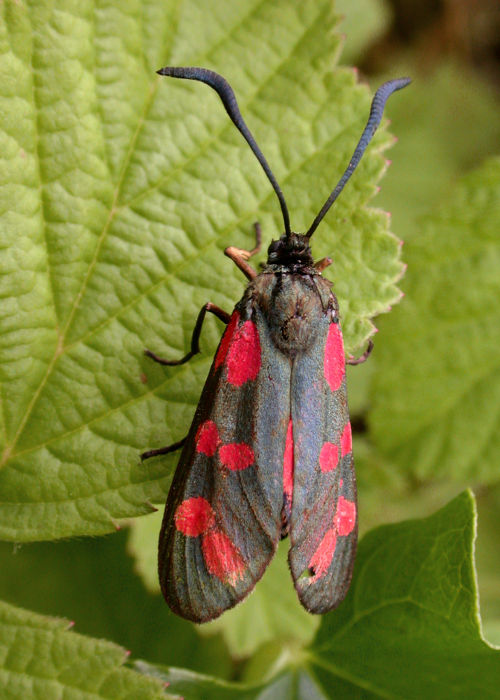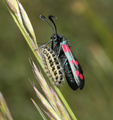Six-spot Burnet
Zygaena filipendulae
Checklist Number54.008 [B&F: 0169]
Verification
Record will be accepted (subject to date and location checks)
Classification
| Family: | Zygaenidae |
| Subfamily: | Zygaeninae |
| Genus: | Zygaena |
| Species: | filipendulae |
| Authority: | (Linnaeus, 1758) |
Common on flower meadows, roadside verges, downland, woodland rides and sand-dunes throughout the British Isles, predominantly coastal in the north of its range. In Hampshire and on the Isle of Wight by far the commonest and most widely distributed burnet moth, about four times more numerous than the second most frequent burnet moth, Narrow-bordered Five-spot Burnet Z. lonicerae. Wingspan 25-39 mm. Day-flying. Unmistakable — no other British species of burnet moth has six spots. Larva feeds on Bird's-foot Trefoil and Horseshoe Vetch, over-wintering at least once.


The abundance in each month is indicated as follows:
 No records
No records Very occasional
Very occasional Irregular
Irregular Uncommon
Uncommon Off-peak, but not unusual
Off-peak, but not unusual Off-peak, but not unusual
Off-peak, but not unusual Main flight time
Main flight time| J | F | M | A | M | J | J | A | S | O | N | D | |
|---|---|---|---|---|---|---|---|---|---|---|---|---|
| Adult |  |  |  |  |  |  |  |  |  |  |  |  |
| Larval |  |  |  |  |  |  |  |  |  |  |  |  |







